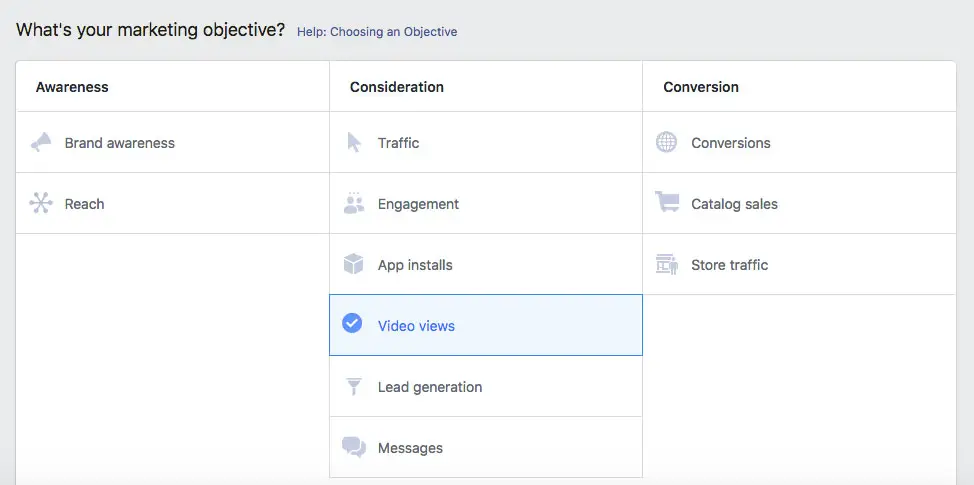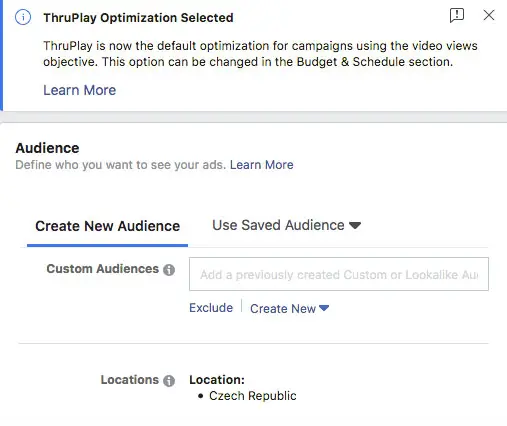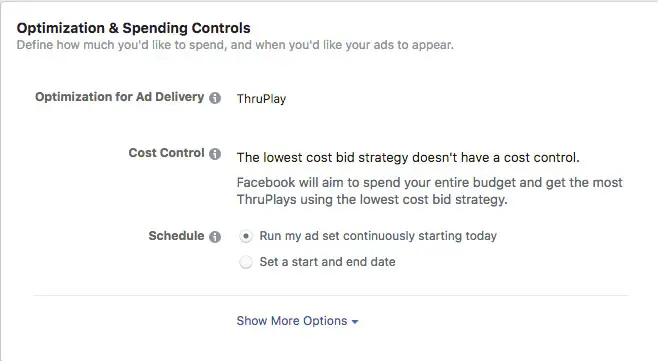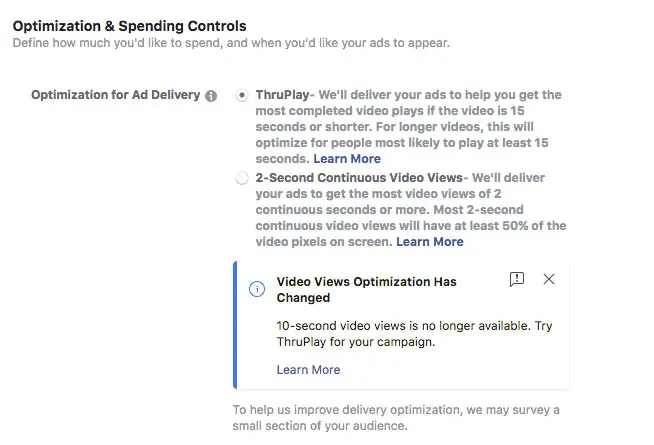In this post, we will look at what ThruPlay is, in relation to Facebook video Ads, and how it works.
Facebook ThruPlay was introduced in the autumn of 2018 to help advertisers optimise video ads and user targeting. A ThruPlay is counted when a user watches a video to completion or at least 15 seconds of it – whichever comes first. Using ThruPlay, Facebook delivers a video ad to users who are likely to watch it in its entirety – or for at least 15 seconds. The advertiser only pays for video ads that are played as such.
As a system, it gives advertisers more effective management of their spending, and should produce better results for them.
In May 2019, Facebook made ThruPlay the default buying option for video ad campaigns, thus putting more emphasis on higher-quality video advertising content and provides greater flexibility in monetising content.
ThruPlay Placements
ThruPlay is available for all video placements on Facebook, Instagram, and Audience Network, but is not supported for ads in Messenger. Here are all the placements, specifically.
- Facebook – Feed, In-stream, Stories, Market Place, Instant Articles, Video Views
- Instagram – Feed, Stories
- Audience Network – In-stream, native, banner and interstitial, Rewarded Video
Supported ThruPlay Ad Formats
Single video or presentation. Instant Experience is not supported by the ThruPlay billing option.
How To Optimize Facebook Video Ad Campaigns For Thruplay
- Go to Facebook Ads Manager, tap on Create New Campaign and choose Video Views as your marketing objective.

- In the Ad Set settings, you will see a message informing you that ThruPlay is now set by default. If you want to change the Optimize for Ad Delivery option, this is also possible.

- In the sections Optimization & Spending Controls and Optimization for Ad Delivery, you will see the default ThruPlay option automatically.

- Click Continue to finish creating your campaign, and Facebook will charge you for video ads according to ThruPlays.
The feature is available with auction or reach and frequency bidding campaigns.
In May 2019, the transition from 10-second video views to ThruPlay optimisation began. From the end of July 2019, all existing campaigns which used 10-second video views optimisation were paused. There are only two options available now: ThruPlay and 2-second Continuous Video Views.

Be warned that the change concerns delivery optimisation – not payments. Advertisers will still have the option to choose Pay Per Impression or ThruPlay.
In the case of Impression bidding, you will pay when one pixel of a video is viewed. As we’ve explained above, with ThruPlay, you will pay for the ad only if the video is watched for 15 seconds or through to completion. It depends on which comes first.
[box]Read next: Facebook Introduces Two New Ways to Buy And Deliver Video Ad Campaigns[/box]

